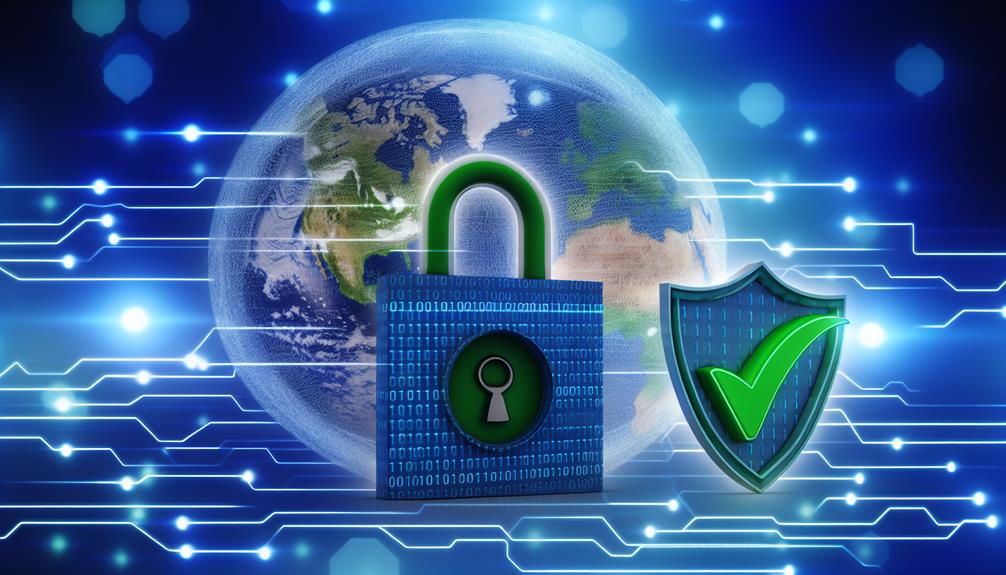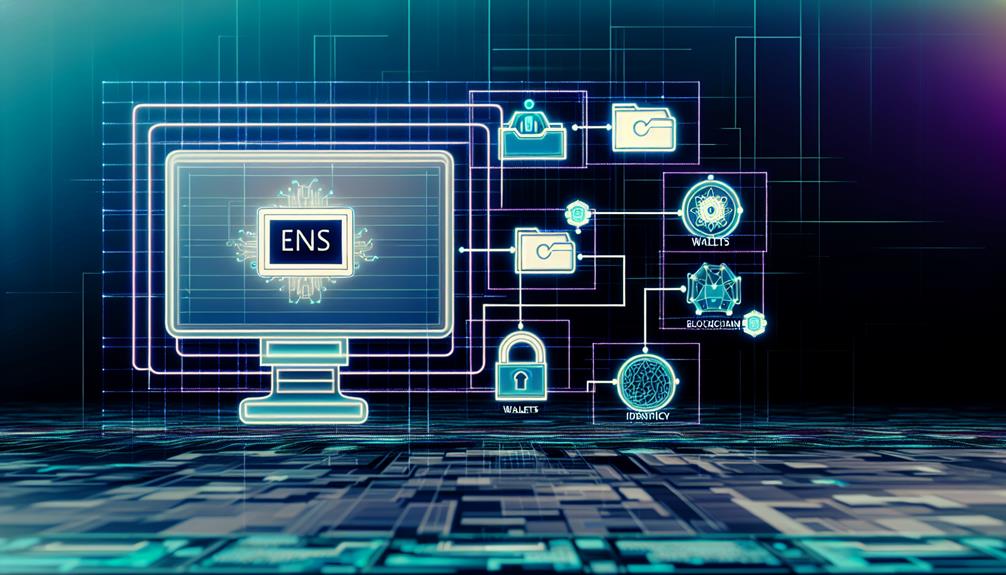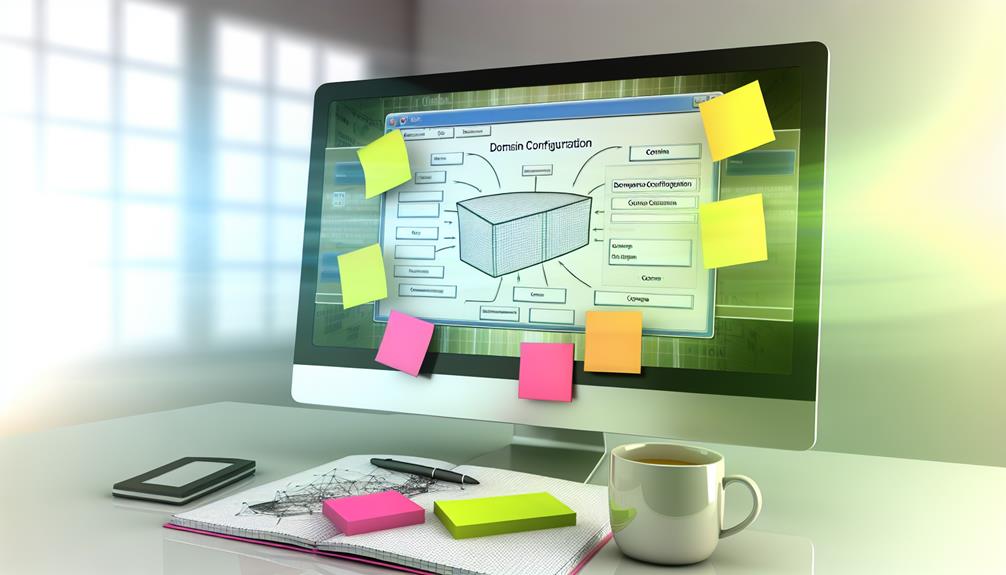Did you know that 70% of organizations lack basic domain security measures? This staggering statistic highlights a critical gap in cybersecurity that could expose your digital assets to significant risks. With evolving threats like hijacking and phishing, it's crucial to understand not only the potential vulnerabilities but also the best practices you can implement to protect your domains effectively. So, what steps can you take to bolster your defenses and guarantee your online presence remains secure?
What is a Secret Safe Domain?
A secret safe domain employs domain seals to enhance security and protect against unauthorized access, which is critical in today's cyber landscape.
You need to understand the legal implications of these seals, as they can serve as a form of verification and trust for your online presence.
Without them, your organization may face increased vulnerabilities and potential legal challenges in the event of a breach.
Importance of Domain Seals
Domain seals play a critical role in enhancing user trust by providing visible proof of a website's security measures.
When you see a security seal from a reputable certificate authority, it signifies that the site has met stringent validation standards, which can reduce the likelihood of phishing attacks.
How Domain Seals Enhance Trust
Enhancing trust on the internet is essential for both consumers and businesses, and domain seals play a pivotal role in achieving this goal.
By confirming an organization's identity, these seals greatly boost consumer trust and reduce the risk of phishing attacks.
Websites with domain seals see a 20% increase in conversion rates, demonstrating their effectiveness in fostering a secure online environment.
Legal Implications of Domain Seals
Maneuvering the legal landscape of domain seals reveals a complex interplay between privacy protection and regulatory compliance. When you register a domain with privacy protection, your personal information is concealed from public WHOIS databases, enhancing security and reducing unwanted contact.
However, this privacy can lead to legal implications. For instance, compliance with privacy laws like the GDPR is vital, especially when your domain is linked to EU citizens. This regulation mandates stringent handling of personal data, affecting how registrars manage WHOIS information.
Additionally, if you face legal disputes, having a domain shielded by privacy protection can complicate matters. Transparency concerning ownership is essential in intellectual property and trademark infringements, and anonymity may hinder your ability to defend your rights.
While domain seals offer a layer of protection, they can also diminish the trustworthiness of your domain; users might question the legitimacy of a site that lacks clear ownership. Therefore, organizations must carefully balance the benefits of anonymity with accountability, as some jurisdictions necessitate public registration for legal and regulatory compliance.
Understanding these nuances helps you navigate the complexities of safe domain practices effectively.
Potential Risks in Domain Management
When managing your domain, it's essential to recognize the dangers lurking in common practices and misconceptions.
Many organizations underestimate the importance of security measures like registry locks and DNSSEC, exposing themselves to potential breaches.
Identifying Dangers Around the Domain Puzzle
Maneuvering the complex landscape of domain management exposes organizations to significant risks that can compromise security and operational integrity.
With only 19% of companies employing domain registry locks, the potential for unauthorized transactions and domain hijacking becomes alarmingly high. When you consider that just 5% of organizations implement DNS security extensions (DNSSECs), the vulnerability to spoofing and man-in-the-middle attacks is stark.
Moreover, around 50% of businesses neglect DMARC records, exacerbating their exposure to email spoofing and phishing attempts. This lack of proactive measures makes it easier for adversaries to exploit your registered domains.
The alarming statistic that 57% of organizations use consumer-grade registrars further highlights the issue, as these often lack the advanced security features necessary for robust domain protection.
The interconnected nature of domains creates an appealing target for cybercriminals; in 2023, 39% of UK businesses reported cyber-attack incidents.
This environment underscores the critical importance of strengthening domain security to mitigate risks associated with malicious domains and enhance overall resilience against attacks.
Common Misconceptions About Domain Vulnerabilities
Despite the alarming statistics regarding domain vulnerabilities, many organizations still hold misconceptions that can lead to inadequate security measures. A primary misunderstanding is the belief that basic domain registration is sufficient for protection. In reality, only 19% of companies use domain registry locks, leaving the majority exposed to domain hijacking.
Additionally, many underestimate the importance of DNS security; only 5% deploy DNS security extensions (DNSSECs), which are essential for authenticating communications and defending against DNS spoofing attacks.
Another misconception is that consumer-grade registrars provide adequate security. With 57% of organizations relying on these registrars, they overlook the advanced features necessary to mitigate risks.
Furthermore, the prevalence of homoglyph domains, often used in phishing scams, is often underestimated. A staggering 70% of these domains are owned by third parties, illustrating the critical need for proactive domain management.
To combat these issues, organizations must adopt best practices in domain management, including utilizing robust security measures and regularly auditing their domain portfolios.
Only through informed awareness can you truly safeguard against the pervasive threats posed by domain vulnerabilities.
Best Practices for Domain Security
To enhance your domain security, implementing a Vaultwarden Domain Strategy is essential for safeguarding sensitive information.
You'll need to guarantee that your domain secrets are stored securely, minimizing the risk of unauthorized access.
Regularly review and update your security measures to maintain a robust defense against potential threats.
Implementing a Vaultwarden Domain Strategy
Implementing a Vaultwarden domain strategy is vital for maintaining robust domain security in today's digital landscape. To start, you should utilize multi-factor authentication (MFA) for secure access, which greatly enhances the protection of sensitive domain information against unauthorized access.
Regularly updating and monitoring your Vaultwarden instance is essential; outdated software can expose vulnerabilities that cybercriminals can exploit.
Next, employ strong, unique passwords for each domain entry within Vaultwarden. Leveraging its password generator helps reduce the risk of credential theft and unauthorized domain access.
Additionally, configure Vaultwarden to utilize SSL certificates, ensuring that data in transit is encrypted. This safeguards sensitive information from potential interception during communication.
Keeping Your Domain Secret Safe
In today's interconnected digital environment, safeguarding your domain secret is essential for maintaining the integrity and security of your online presence. A high number of organizations underestimate the importance of implementing domain registry locks, with only 19% currently utilizing them. This step is critical to secure transactions against unauthorized changes.
Additionally, employing DNS security extensions (DNSSEC) is recommended to authenticate communication; however, a mere 5% of organizations have adopted this practice.
Regularly monitoring domain activities and DNS records is fundamental for early identification of potential compromises, yet about 50% of businesses lack continuous monitoring strategies. To bolster your domain's security, employing multi-factor authentication (MFA) for domain management systems is imperative, but many organizations still overlook this significant measure.
Given the rising threats in cyber security, proactively registering high-value target domains can prevent misuse. Cybercriminals increasingly exploit easily accessible domains, making it necessary to adopt these practices.
Discussion on Domain Security Trends
As you assess the landscape of domain security, it's essential to recognize the shifting trends and emerging threats on the horizon.
Adapting to these evolving challenges requires you to stay informed about best practices, such as implementing domain registry locks and DNS security extensions.
What are the Future Trends in Domain Security?
A significant shift is underway in domain security practices, driven by the urgent need for organizations to combat increasingly sophisticated cyber threats. As only 5% of organizations currently utilize essential measures like DNSSEC and DMARC, there's vast potential for growth in these domain security technologies.
With 39% of UK businesses reporting cyber-attacks in 2023, the demand for thorough domain monitoring and proactive threat detection solutions will surge.
Cybercriminals are leveraging advanced phishing kits and social engineering techniques, prompting the necessity for continuous adaptation in domain security practices. Consequently, organizations are increasingly turning to AI technology to detect and respond to phishing and fraudulent activity, indicating a trend toward automated, intelligent solutions in domain security management.
Moreover, as legal regulations surrounding data protection evolve, organizations will face heightened pressure to implement robust domain security measures. This guarantees compliance and safeguards against potential financial losses resulting from breaches.
As top-level domains become more targeted by attackers, adopting a forward-thinking approach in domain security will be critical to mitigate risks and protect digital assets effectively.
How to Adapt to Evolving Security Challenges?
Adapting to evolving security challenges demands a proactive approach that integrates advanced technologies and practices. As cybercriminals increasingly leverage sophisticated phishing schemes, it's imperative to monitor your domains vigilantly.
With 70% of homoglyph domains registered by third parties, you need to be aware of potential threats and take action before they impact your organization.
Implementing domain registry locks is essential; however, only 19% of companies currently use them. This leaves a significant gap, making unauthorized domain transactions easier for attackers. You should consider strengthening your domain security by adopting DNS Security Extensions (DNSSECs), which remain alarmingly low at just 5%. This technology is critical for ensuring communication authentication and can deter many attacks.
Additionally, continuous education for employees is significant. Regular training on recognizing phishing attempts can drastically reduce the risk of falling prey to these attacks, which are reported weekly in many businesses.
Best Practices for Maintaining Domain Security
Maintaining domain security requires a thorough strategy that addresses both current trends and foundational practices.
With the increasing cyber threats, it's important to adopt robust measures to protect your top-level domain and intellectual property. Here are some best practices you should implement:
- Utilize Domain Registry Locks: Only 19% of companies do this, but it's significant for transaction security and preventing unauthorized changes to your domain.
- Implement DNS Security Extensions (DNSSECs): With only 5% adoption, this protocol is crucial for authenticating communications and preventing domain spoofing.
- Continuous Monitoring of Domain Activities: Regular surveillance helps you detect potential phishing attacks quickly, which are reported by many businesses weekly.
- Invest in Advanced Threat Detection: Since only 50% of organizations use DMARC records, enhancing your email domain security is important to guard against spoofing.




